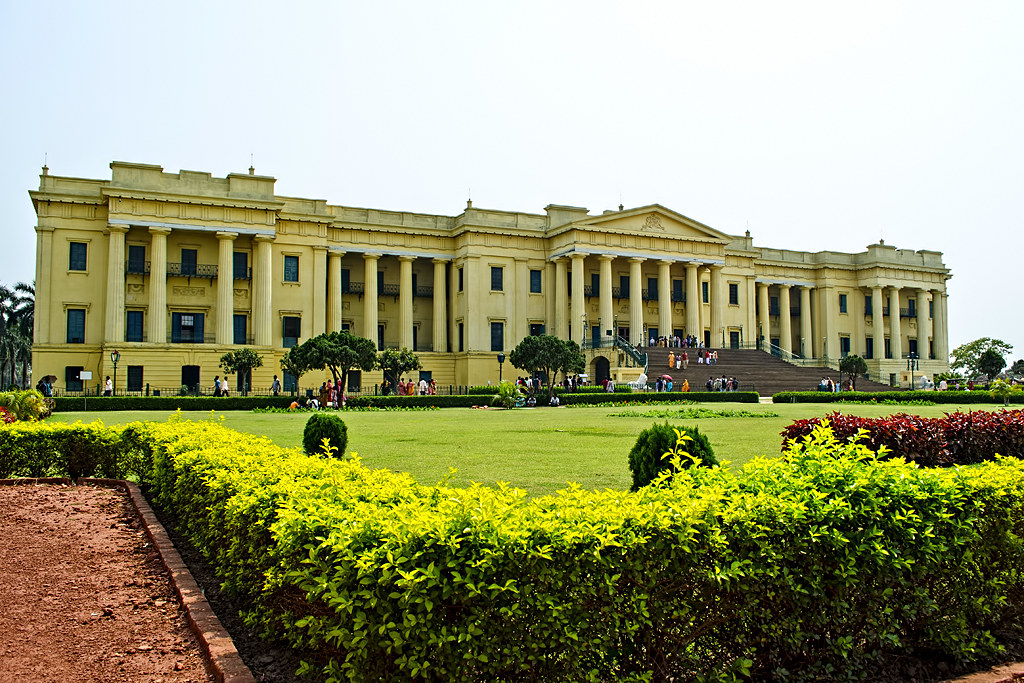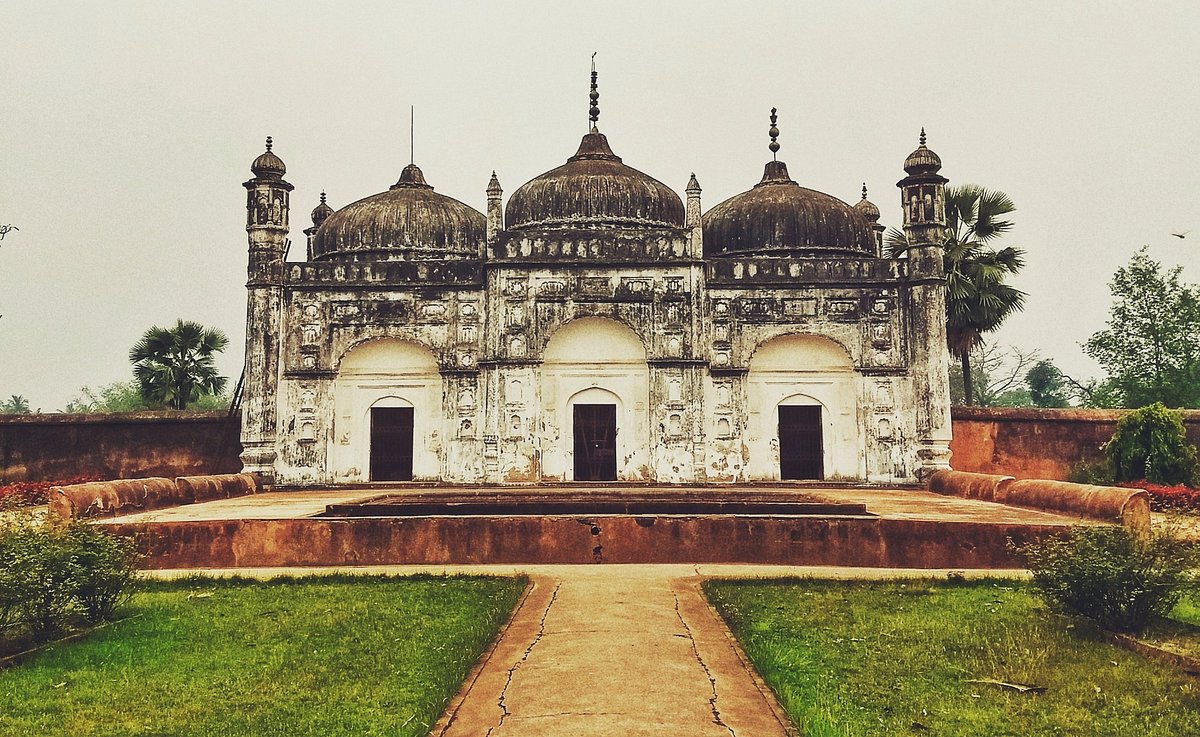The Complete Guide to Murshidabad, India and an In-depth Analysis of the Nawab’s of the Bengal.
Introduction: Where Murshidabad is Located, its History and Culture
Murshidabad is a city in the Indian state of West Bengal. It is located on the Ganges River and has a population of approximately 1.5 million people. The city was once an important political center, as it was the capital of Bengal under Nawabs from 1704 to 1857.
The history of Murshidabad dates back to 1666, when it was established by Murshid Kuli Khan, who had been appointed by Emperor Aurangzeb to be the first Nawab of Bengal. The region of Murshidabad is predominantly Muslim and the population speaks Bengali. The district has a rich history and culture with many monuments from the Mughal era.
The culture of Murshidabad is influenced by the Mughal, Bengali and English cultures. This can be seen in the food habits, festivals, clothes and architecture. The Mughal influence can be seen in the clothes that are worn by people here. They usually wear turbans and have a traditional dress called a ‘kurta’ which is a long shirt with full sleeves. The Bengali influence can be seen in the food that they eat here since it has a lot of rice dishes and fish curry. The English influence can be seen in their architecture as well as their gardens which have been designed by an English architect from London.
Hazarduari Palace: One of the Best Museums in West Bengal

The Hazarduari Palace is a museum in West Bengal, India. It was built by Nawab Siraj ud-Daulah in 1757 and is located in Murshidabad. The Hazarduari Palace Museum is an architectural marvel, which reflects the Nawabs’ love for European style and their fascination with Mughal architecture. The palace was designed by Major John Smith, an engineer in the East India Company’s army, and it has one of the largest rooms in India. The Hazarduari Palace Museum has a vast collection of art pieces from all over Asia. There are various paintings, sculptures, textiles, and other works on display. The museum also has many artifacts from the Mughal era such as swords and daggers.
The palace is known for its architectural design and structural engineering achievements. It has been declared to be a museum and has been preserved as a heritage site by the West Bengal Heritage Commission. The palace has both European and Indian motifs. It is decorated with stained-glass windows, porcelain tiles from Doulton & Co., and extensive collections of weapons and armors from around the world. The palace is now a museum that showcases the Nawabs personal collection of paintings and furniture.
Some of the notable tourist attractions in Hazarduari Palace are:
– The Durbar hall that serves as a reception area
– The banquet hall that can accommodate 500 people
– A well laid out garden with a fountain in the center
Imambara:
 The Imambara is a mosque in Murshidabad, West Bengal, India.
The Imambara is a mosque in Murshidabad, West Bengal, India.
The mosque is surrounded by a large garden with fountains and ponds. It also contains many buildings for public use, such as guest quarters for travelers and their horses, a library with over 30,000 books (many of them rare Sanskrit texts), rooms for teaching Islamic theology to children. It remains closed most of the days of year except the time of Muharram.
Kathgola Palace:

Credits: Souradeep Das (https://www.instagram.com/soura_deephyr)
Owned by a Jain businessman family, the Dugars, they hired a French architect to renovate a part of the palace in the late 19th century and added the Victorian lions and Michelangelo statues. This palace is a perfect blend of art and architecture and connoisseurs of true art will get a taste of both. Once you go past the marble lions and the statue of Michelangelo, you will see the Adinath Temple inside the premises of the palace. Built in 1933 by Lakshmipat Singh Dugar, you will find 17 images of Jain Tirthankaras and other deities. And as you go inside the palace, you’ll be left awestruck by the valuable paintings, mirrors and priceless vintage furniture.
This place is quite popular for shooting and scripting various films. A portion of the recently released Jisshu Sengupta starrer ‘Ek Je Chilo Raja’ was shot at this location. The palace, built on about 30 acres of land, is surrounded by a beautiful flower garden and a Jain temple. There is also a bird exhibition here, where there are different species of birds. In front of the palace is a small pond, where fish of different colours can be seen.
Jagat Sheth’s House:

credits: www.wikimedia.org
In Murshidabad, West Bengal, the “House of Jagat Seth” is now a popular historical monument. The Nawab of Bengal bestowed the title Jaget Seth, which can be translated as “global banker or trader.” The title Jagat Seth was given to one of India’s wealthiest banking families, and it was normally bestowed to the family’s eldest son. The Nawab of Bengal’s financial advisor was a dynasty of traders that controlled half of Bengal’s economy. The family’s main business was minting, selling, and buying bullions. Controlled exchange rates and managed revenue and remittances collection. Jagat Seth’s House also worked as a money lender to emperors and zamindars, much like the central bank of the day.
By uniting with the British to depose Nawab Siraj-Ud-Daulah from the throne, Jagat Seth’s family is thought to have had a crucial role in shaping India’s political discourse. As a result, he assisted in the establishment of British imperial rule in the country. Mir Qasim, Mir Jafar’s successor, ordered the execution of the two Seth brothers, effectively ending the Jagat Seth family.
Jagat Seth’s residence in Murshidabad is now a museum housing Jagat Seth’s and his family’s belongings. Expensive gold woven sarees, complex clothes used by males in that era, used coins, books, and weaponry utilised in those times are among the objects on show. The house also has a secret underground tunnel that tourists can use as well.
Katra Mosque:

credits: www.outlookindia.com
Nawab Murshid Quli Khan erected this massive mosque. The Archeological Survey of India is currently in charge of its upkeep. It’s a must-see, and you should always go with a guide. They will explain you the entire history of the Nawab for a very cheap fee. The Nawab’s burial site also has a fascinating history. The Katra Masjid (also known as Katra Mosque) was erected between 1723 and 1724 as a mosque and the mausoleum of Nawab Murshid Quli Khan. It is located in Murshidabad, West Bengal, India, on the north eastern outskirts of the city. It is significant not just as a famous centre of Islamic study, but also as the site of Murshid Quli Khan’s mausoleum.
Futi Mosque:

credits: www.taleof2backpackers.com
This edifice may be seen on the left side of the road on your route to Katra Masjid. It is thought to have been erected overnight by a Gin who was unable to complete the roof construction. Because the sun had already risen, the dome was only half completed. As a result, the masjid is known as Futto (hole). The toto driver informed us that many Bengali films and serials were filmed here. The property is in desperate need of repair. You will be sufficiently enthralled to visit it. Surprisingly, no adequate guidance will be provided. You may give a few bucks to the local children, and they will teach you about the history. However, it is a good location.
It’s possible to give it a shot. Because there is no safety or security,you can touch the walls. But request you only to touch it. Please don’t try to scratch it names there.
Khoshbag:

credits: www.tripadvisor.com
This rose garden on the banks of Bhagirathi was Nawab Alivardi Khan’s favorite vacation spot. He used to come here in a barge with his family. Khoshbagh is named after the fragrance of roses. Nawab Alivardi, his wife, Siraj’s younger brother and two aunts, one of whom is Ghaseti Begum, are buried in Khoshbagh. She was one of the most notorious conspirators against Siraj in history. History, however, had never forgiven her. There are also one or two relatives, close companions, councilors, khas servants of the Nawab family buried here. Some of them were at the root of Siraj’s assassination. Of the 30/31 tombs in Khoshbagh, only two died of natural causes – Alivardi and Meherunnesa. All others died due to accidents- murder, conspiracy, revenge, greed and lust. By time, Bhagirathi has moved far away. It has witnessed hundreds of histories and Bhagirathi is still flowing in its own rhythm. You might heard their Cryings and wailing through ears.
Tomb of Azimunnisa Begum:

credits: www.flickr.com
Azimunnisa Begum, who was forced to consume the hearts of three-month-old newborns, developed a taste for the exquisite flesh sacks that were made on a regular basis for her health. Buried alive under the staircase of her own palace with beautiful roof top gardens punished to rot under the dirt falling from the stairs, but is this the whole storey, or was she just banished from Murshidabad as some scholars say, we will never know because lores are usually vague and have a very little factual source, this storey was not the only case we see in history there were many other Lores in the whole wide world, where stories emerged that eating the ashes of their dead relative who died of the possession of same malice spirit which made you spit blood , would fix it .(or what later came to be known as TB ) . Saw the deaths of many and took longer to understand , and why wouldn’t it , people were rather focused not on making cures and but on making Lores.
Moti Jheel:

credits: wikimedia.org
Motijheel used to have a castle and a lovely lake. The lake is still alive, but the castle is no more. Motijheel is one of the rare spots in the world where you can see both Indian and British history. Nawazesh Mohammad, the husband of the famed Ghasseti Begum, dug this lovely horseshoe-shaped lake. Motijheel eventually became a home for Lord Clive, Warren Hastings, and a number of other notable British Lords. Because of its ties to British authorities, it became known as ‘Company Bagh.’ The only structure that has survived is the Shahamat Jang Mosque.
Nashipur Palace:
Kirti Chand Bahadur, a descendant of Debi Singh, erected the Nasipur Palace at Mahimapur. Debi Sing, who came from Punjab, worked as a tax collector for the East India Company in its early days. Within the palace compound lies Ramachandra Temple, one of the biggest temples in Murshidabad district. Nearby is the temple of Lakshmi-Narayana. The Jhulan festival, which commemorates the heavenly love of Radha-Krishna, is hosted in Nasipur Palace.






Pritraj Sikdar
February 15, 2022Awesome illustration of the place. Nice work. Keep it up.
TANMOY BISWAS
February 15, 2022Thank you so much. Keep following.
Tanay
February 15, 2022Thank you for sharing this details,this is really helpful to us for our one day trip to Murshidabad
TANMOY BISWAS
February 15, 2022Thanks. Glad to hear this. Do share your feedback post trip.